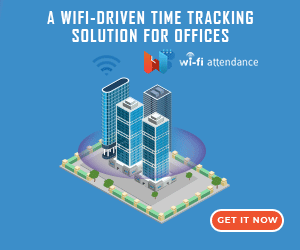
Employee Absenteeism costs companies billions of dollars globally. It can be defined as intentional and habitual leave from work that is unscheduled. Calling in sick, arriving late daily and taking undue long breaks is also counted as absenteeism. It leads to loss of productivity and disruption in work flow.
In some companies absenteeism is a chronic problem leading to low morale and affecting the bottom line negatively.
Many times the cause of an unscheduled leave is genuine like medical emergency, personal work or ill family member, but employees who are absent regularly are simply avoiding work.
There may be authentic reason behind not wanting to attend office too. Reasons could vary from office bullying to having an indifferent boss. It is the company’s job to find out the reason and address it before widespread absenteeism becomes a disease in the office.
All companies face absenteeism in some form and at some stage. Here are ways to deal with it and keep your workforce productive and motivated.
Ways to Deal with Employee Absenteeism
Study the Problem
It is important to first study the problem of absenteeism in your company. Collect data on leaves and people on unscheduled absence. Does absenteeism peak during a particular month or is it more prevalent in any one department? These questions will help you to get to the root cause of the problem.
Having attendance and leave management system like Wi-Fi attendance will help you in getting data easily.
Have a Written Policy
Many companies do not have a written policy on work absence. This leads to confusion and wastage of office hours by some employees. Make sure you have a written policy stating the office hours, acceptable delays, half day provisions if any and possible consequences of breach of policy.
Make it a part of induction program for new joinees and especially educate managers on handling absenteeism.
Train Managers
Managers must identify absenteeism in early stages and resolve or report it to HR. Any employee taking more than two unplanned leaves a month or arriving more than an hour late everyday is a red-flag; although the limits will depend on your company’s policy.
There must be a clear course of intervention for such employees and the managers should be instructed to take these cases seriously.
Wi-Fi Attendance System
Common attendance system can be exploited by employees who want to avoid work. The problem with RIFD and biometric attendance system is that they can be fooled with proxy attendance and cannot register actual time worked by an employee.
Wi-Fi attendance on the other hand tracks real time location of the employee using office router. Employees can mark attendance only when they are connected to office wifi.
This allows HR to note unreported absence or inadequate working hours by any employee. A technologically advanced wifi attendance system is hence an efficient way to tackle employee absenteeism.
Employee Support
A good Employee Assistance Program or EAP does a lot to keep absenteeism low. EAP are support programs that help out employees in personal front. This could be though financial support, healthcare services, flexible works schedules, counseling etc.
EAP aims at supporting employee in testing times so that he/she can get back to full productivity at their earliest.
It also makes the employee feel cared for which makes it less likely that they will miss office or cause a loss to the company.
Final Thoughts
Employee absenteeism leads to low productivity and huge costs for companies. Dealing with it requires a formal process and good technology.
By tracking attendance through Wi-Fi Attendance App you can keep a close eye on unscheduled absence and take corrective action.









